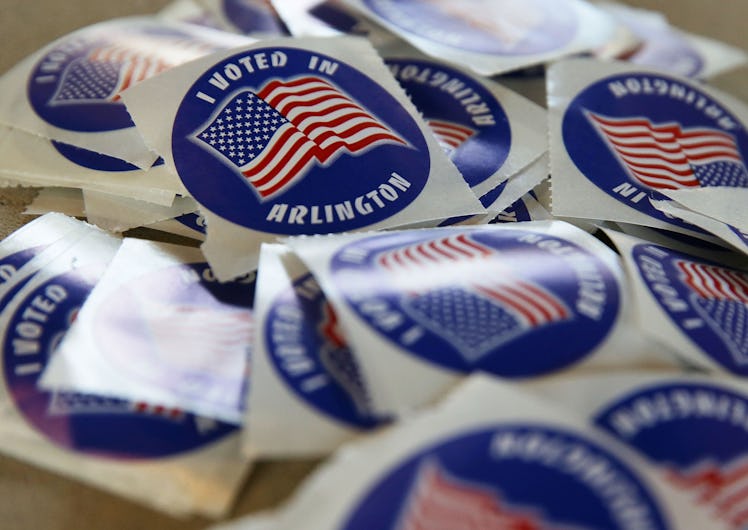
People Are Already Voting In The 2018 Midterms, So Here's How To Join Them
Nov. 6 is less than two months away, and people are already voting in the 2018 midterms. The first early voting is live for multiple states around the country, and while many voters will wait for Election Tuesday to cast a ballot, some voters are using mail, early, and absentee voting rules in their states to fulfill their civic duty early. These ballots, as an alternative to showing up in person on election day, have seen a massive surge in recents years, and it's not hard to see why.
As of Sept. 21, absentee and early ballots are being cast in states like Minnesota, Virginia, and South Dakota, with more states to follow. If this news is inspiring you to get ahead of the game, there are a few things to know. First there are three types of alternative voting: absentee, early voting, and mail-in, and some distinctions therein. The rules for what kind of voting you can do differs by state. Some states are stricter than others on how you can register for these alternative methods; for example, some require excuses or valid reasons for why you can't show up in person on election day (you can check what your state requires here). But there are other states, like Washington and Colorado, that hold their elections entirely by mail. If you qualify, you can get a mail-in ballot easily. Just check out USA.gov's page on absentee voting, and then follow the links to find your state's election board and check out the rules.
So if you're looking ahead to voting day (and thanks to Instagram's new push to get out the vote, you'll probably see about this plenty), here's what to know. Each state has a different set of timelines for when mail-in ballots can begin being processed and what the deadline is for receiving them. Here's a calendar showing when you have to return your ballot by for it to be counted. (If you're more of a visual person, check out this nifty map that provides a clear table of the rules for your state, deadlines, and more.)
This alternative voting isn't for everyone (literally, not allowed), but depending on your situation, it might be an attractive (and viable) option. Maybe you're away on a trip, or you've got school, work, or no access to reliable transportation. Maybe you're a single parent and getting to the polls means hiring a babysitter. (Or, let's be honest, the notion of voting from the comfort of your own home rather than fight long lines at the polls on election day doesn't sound like a bad idea.)
Whatever your personal reason, the options are becoming more popular among voters. According to data from the U.S. Election Assistance Commission (EAC) as of October 2017, in 2016, more than 50 percent of votes in 16 states were cast by a combination of early, by-mail, and via absentee ballots. The use of these methods more than doubled between 2004 and 2016, and now comprise one in five ballots. According to The Hill, some 40 percent of voters are expected to take advantage of the alternative methods this year. (You can learn more about registering for an absentee ballot here.)
Though initially geared towards voters who were physically unable to be present to cast a vote in person (for example, out of the country on military service), the rise in absentee voting is especially crucial relevant given how low voter turnout rates are in the U.S., which still lags behind its international peers. (Less than 66 percent of the voting-age population cast ballots in the 2016 election, according to the Pew Research Center, and historically, only about 40 percent participate in midterm elections.)
Whether you're studying abroad or just plain smart and would rather spend Election Tuesday doing other things, be sure to check what your state's timeline is for casting your ballot early so you don't miss out.